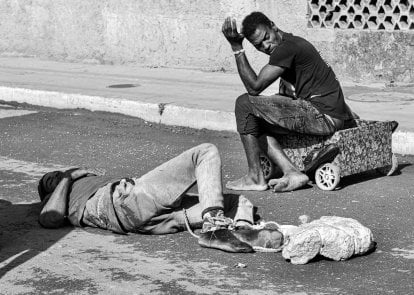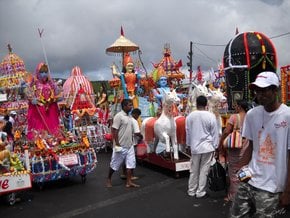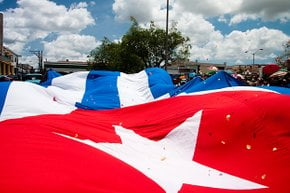San Lazaro Pilgrimage 2026 in Cuba
Witness the impressive and passionate pilgrimage happening annually at San Lazaro Church in the town of Rincón
Dates: December 17
Each year on December 17, thousands of worshippers from across Cuba journey to the small yet deeply revered San Lázaro Church in Rincón, located just 17 kilometers from Havana. This annual pilgrimage is among the most powerful expressions of devotion in Cuba, as people come to seek healing, give thanks, or fulfill promises to Saint Lazarus.
Sacred Journey Highlights
Santería and Catholic beliefs intertwine in this holiday, honoring Babalú Ayé, the deity of healing, also known as San Lázaro or Lazarus. Many pilgrims arriving in Rincón are seeking relief from illness. Some make the journey crawling or on their knees, often carrying heavy burdens like crosses or blocks of concrete. This practice, passed down through generations, reflects a belief that suffering and sacrifice serve as offerings to the saint in exchange for blessings. Devotees of Saint Lazarus come in hopes of health and prosperity.
The Patron Saint of the Poor and Sick
At times, the pilgrimage can be a haunting sight, with devotees bleeding from walking on their knees and occasionally collapsing from sheer exhaustion. Yet, this powerful ceremony reveals much about Cuba’s cultural and spiritual tapestry. For Catholics, Lazarus is revered as the patron of the poor and sick, often depicted as a humble beggar with dogs by his side. In the Cuban African religion of Santería, however, he is known as Babalú-Ayé, a deeply respected deity associated with both the spread and the healing of epidemics. Loved and feared, he holds a prominent place in the Cuban faith as one of the island’s most cherished saints.
More About the National Sanctuary of San Lazaro
El Santuario Nacional de San Lázaro ranks among Cuba's most visited places of worship. Its origins are closely linked to the Havana Leper Colony, established in the 17th century and now a Specialized Dermatological Hospital. By the early 20th century, both the church and hospital were relocated to the El Rincón area. In the 1990s, the Church of San Lázaro was officially declared a national sanctuary. The church was designed with three naves, each with a separate entrance to welcome worshippers and visitors alike.









































